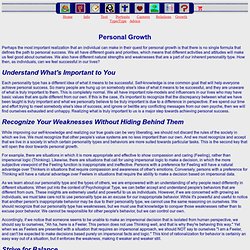

Interaction Styles. Interaction Styles are groupings of the 16 types of the MBTI instrument of psychometrics and Jungian psychology.

The Interaction Styles model was developed by Linda Berens, PhD, founder of the Temperament Research Institute. This model builds on David Keirsey's Temperament model and its subcategories, and is based on observable behavior patterns that are quite similar to David Merrill's "Social Styles" and William Moulton Marston's DiSC theory. Development[edit] Linda V. Berens, another doctor of Psychology and a former student of Keirsey, would also use a similar system, pairing the Interaction Styles (which were implicit in Keirsey's system) with both the temperaments and the cognitive processes. Comparison and cross-mapping with Keirseyan Temperament[edit] In addition to the E/I and Directing/Informing categories, there is also "Attention: Focus and Interest (Control/Movement)", which pairs the diametric opposite styles.
The role of Thinking, Feeling, Judging and Perceiving[edit] The Personality Page. Personal Growth. Perhaps the most important realization that an individual can make in their quest for personal growth is that there is no single formula that defines the path to personal success.

We all have different goals and priorities, which means that different activities and attitudes will make us feel good about ourselves. We also have different natural strengths and weaknesses that are a part of our inherent personality type. How then, as individuals, can we feel successful in our lives? Each personality type has a different idea of what it means to be successful. Self-knowledge is one common goal that will help everyone achieve personal success. While improving our self-knowledge and realizing our true goals can be very liberating, we should not discard the rules of the society in which we live.
For example, there are situations in which it is more appropriate and effective to show compassion and caring (Feeling), rather than impersonal logic (Thinking). Understanding the Eight Jungian Cognitive Processes / Eight Functions Attitudes. Tracking the Elusive Human, Vol. 1. By Tyra and James Arraj. 151pp, paper, $12.
Printed copies are available.. Copyright 1988 Tyra Arraj and James Arraj. ISBN: 0-914073-16-8 To C.G. Jung TRACKING THE ELUSIVE HUMAN puts you on the trail that leads to the discovery of your own type and its development. It describes C.G. The work of these pioneering psychologists is seen in its true light as a practical way of dealing with daily life. Reviews "Discussions of Jung's psychology are often bogged down in theoretical interpretations: the beauty of this volume is in its practical applications to daily life...
Reviews of the first version of Tracking the Elusive Human called A Tool for Understanding Human Differences: "This book offers a compassionate view of differences among human beings. "The authors give parallel expositions of William Sheldon's theory of body types and of Jung's theory of psychological types with the aim of illustrating how the two models complement and illuminate each other. 1 C.G. Complete Type Tracking. TypeLogic Home Page. TypeTango Myers Briggs Personality Theory Dating Personals. Personality100: PhD-certified Personality Test. cU3rE.jpg (JPEG Image, 1467x1586 pixels)